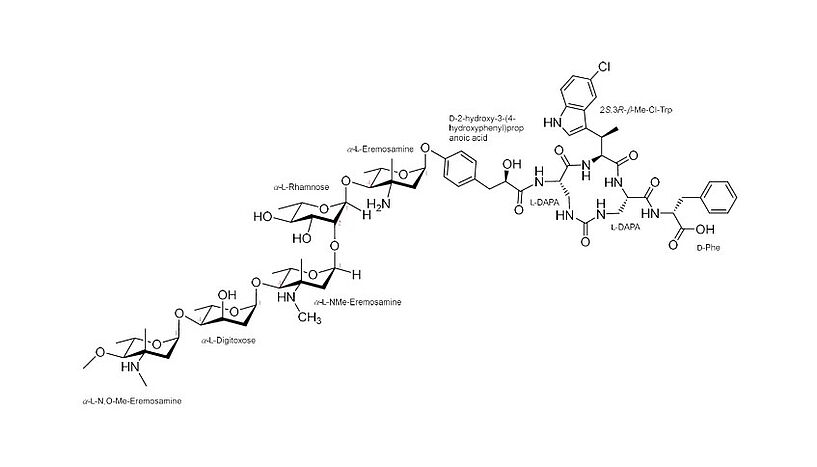Humans are desperately in need of new antibiotics, so you can imagine the surprise when a team of scientists uncovered a new molecule wielding formidable antibiotic power against superbugs inside a Chinese mine.
The star of the story is saarvienin A, a brand-new glycopeptide antibiotic produced by an unusual strain of Amycolatopsis, a genus of bacteria known for making medical heavy-hitters like vancomycin. This unique strain was discovered in the Bayan Obo Mining District of Inner Mongolia, home to the largest known rare-earth element deposits on Earth.
Scientists from the University of Vienna and the Helmholtz Institute for Pharmaceutical Research Saarland cultivated the bacteria in a lab and extracted their natural compounds. Among them was saarvienin A, which was found to possess strong activity against Gram-positive bacteria, notably Staphylococcus aureus strains resistant to conventional antibiotics like methicillin, vancomycin, and daptomycin.
It works its “magic” in a unique way. While most glycopeptide antibiotics like vancomycin target bacterial cell wall synthesis by binding to specific building blocks, saarvienin A seems to operate through a mechanism that’s still not fully understood. It also features an intriguing structure, which differs significantly from that of its glycopeptide cousins.
“We were excited to find that saarvienin A doesn’t fit into any known category. Its unique structure could pave the way for antibiotics that bacteria have never encountered before,” Jaime Felipe Guerrero-Garzón, study author from the University of Vienna’s Department of Pharmaceutical Sciences, said in a statement.

The illustration depicts the chemical structure of saarvienin A, a new antibiotic that is active against bacteria resistant to many currently used antibiotics.
Looking ahead, the team wants to dig deeper into the novel compound and test whether it has the potential to be a drug candidate for living, breathing humans.
“Discovering a new antibiotic is only the beginning. Now we face the fascinating challenge of refining it into a drug candidate suitable for clinical use,” said corresponding author Sergey B. Zotchev from the University of Vienna.
Researchers are always keen to find new antibiotics due to the rise of antibiotic resistance. The abuse and misuse of traditional antibiotics have allowed some bacteria to evolve a resistance mutation to conventional drugs, creating infections that are extremely difficult to treat.
Antibiotic-resistant bacteria are estimated to have caused 1.27 million deaths globally in 2019, but that figure is forecasted to rise to 8.22 million deaths per year by 2050.
Fortunately, new antimicrobial compounds are still being discovered. Some are found in nature – hidden in soil, deep-sea vents, or even mines – while others are being uncovered with the help of artificial intelligence (AI). Scientists are now using AI to comb through massive digital libraries of chemical compounds, pinpointing those with the potential to take down drug-resistant superbugs. So far, it’s proving to be an incredible success.
The study is published in the journal Angewandte Chemie International Edition.
Source Link: New Powerful Antibiotic That Kills Superbugs Found Hiding Deep In A Chinese Mine